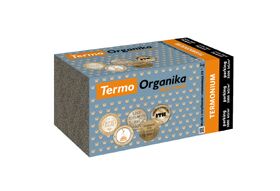Anthracite EPS boards produced by foaming polystyrene and intended for thermal insulation of floor, roofs, flat roofs and car parks. The product complies with the harmonized standard EN 13163:2012
- thickness - from 20-300 mm
- length 1000 mm
- width 500 mm
- bending strength level BS200 ≥ 200 kPa
- compressive stress at 10% relative deformation CS(10)100 ≥ 150 kPa
- declared thermal conductivity ratio λD at a temperature of 10°C - 0,031 W/(m*K)
- fire reaction class E
- does not contain substances hermful to health and the environment
- does not destroy the ozone layer, contains only permitted biocides
- produced according to requirements of the standard PN-EN ISO 14021:2016-06
Apllication:
- flat roofs,
- industrial floors (factories, shops and warehouses),
- parking areas and garages,
- insulation of upper tie beams, lintels and other thermal bridges,
- driveways
Instruction
The EPS boards should be applied in accordance with the manufacturer’s instructions, RTQ ITB-1261/2013 Technical and Quality Recommendations, and guidelines contained in a construction design. The basic guidelines for laying the thermal insulation of floors and ceilings are as follows: make sure that the basis is flat and dry, otherwise flatten it. The floors on the ground require a damp proofing barrier (in form of tar paper, PE film, bituminous, water-based sealants). In case of ceilings between floors, apply a separating layer of PE film. Where the floor meets the wall, joint filler tape should be used. Start laying the boards in the corner and place the first row of boards from the wall by pushing them against the joint filler tape. Subsequent rows should be laid with staggered joints, without crossing the junctions of boards. When all insulation is in place (can be in two or more layers), spread at least 0.2 mm thick PE film to protect the boards from moisture and penetration of underlayment into the spaces between the EPS boards. Where water-based underfloor heating is used, install the heating cables with suitable board clips on which the PE film has already been spread. Please take into account that the thickness of the underlayment needs to be increased by the outer diameter of underfloor heating pipes.Do not use the EPS boards in direct contact with the substances having destructive effect on polystyrene EPS, such as organic solvents (acetone, benzene, nitro), etc.
Package, storage, transportation
TERMONIUM parking boards are supplied only in the original manufacturer's packaging. The label on a package contains the following information: the name of a product, the manufacturer's name and a factory name, the date of production, EN 13163:2012 standard number, a code compatible with that standard, and declared technical features. TERMONIUM parking boards should be protected against damaging and weather conditions.
Thermal resistance
Thermal resistance
| Thickness | Thermo | Thermo + |
| mm | m2K/W | |
| 10 | 0,30 | 0.30 |
| 20 | 0.60 | 0.60 |
| 30 | 0.95 | 0.95 |
| 40 | 1.25 | 1.25 |
| 50 | 1.60 | 1.60 |
| 60 | 1.90 | 1.90 |
| 70 | 2.25 | 2.25 |
| 80 | 2.55 | 2.55 |
| 90 | 2.90 | 2.90 |
| 100 | 3.20 | 3.20 |
| 110 | 3.50 | 3.50 |
| 120 | 3.85 | 3.85 |
| 130 | 4.15 | 4.15 |
| 140 | 4.50 | 4.50 |
| 150 | 4.80 | 4.80 |
| 160 | 5.15 | 5.15 |
| 170 | 5.45 | 5.45 |
| 180 | 5.80 | 5.80 |
| 190 | 6.10 | 6.10 |
| 200 | 6.45 | 6.45 |
Värdet talar om hur bra materialet är på att leda värme. När man vill isolera är man ute efter ett så lågt värde som möjligt.
A non combustible products
A1 no contribution to fire
A2 no contribution to fire
B combustible products
B very limited contribution to fire
C limited contribution to fire
D Acceptable contribution to fire
E Acceptable contribution to fire
F no performance requirement












